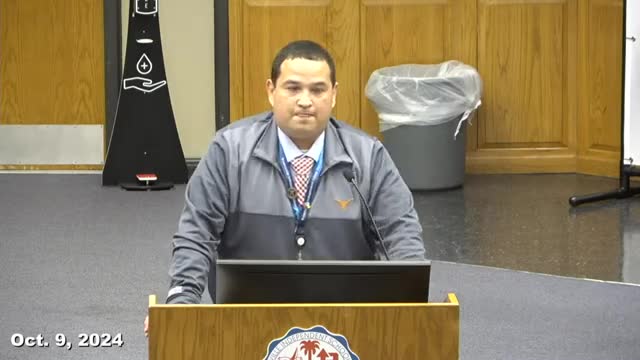Schools face crisis as aging facilities hinder student success
October 09, 2024 | BROWNSVILLE ISD, School Districts, Texas
This article was created by AI summarizing key points discussed. AI makes mistakes, so for full details and context, please refer to the video of the full meeting. Please report any errors so we can fix them. Report an error »

In a recent government meeting, officials discussed the critical relationship between school building conditions and student achievement, emphasizing the need for improved facilities to enhance educational outcomes. The meeting highlighted that students in deteriorating school environments score significantly lower on standardized tests—between 5 to 11 points—compared to those in modern buildings.
The discussion also addressed the pressing issue of deferred maintenance, which refers to the postponement of necessary repairs and upkeep due to insufficient funding. Many school facilities are aging, with one-third of the campuses over 45 years old and another third built between 1980 and 2004. This aging infrastructure, coupled with the coastal location of the schools, exacerbates issues like corrosion and flooding, further impacting the learning environment.
Dr. Travis, a key speaker at the meeting, reiterated the importance of establishing district facility standards to ensure that both instructional and physical environments meet the needs of students. He pointed out that inadequate maintenance not only shortens the lifespan of school facilities but also creates obstacles to effective teaching and learning.
The meeting concluded with a call for the creation of a citizens facility committee to address these challenges and develop a strategic plan for future improvements. The officials acknowledged the hard work of the maintenance crew but stressed that without adequate funding and a proactive maintenance schedule, the issues would continue to accumulate, ultimately hindering educational progress.
The discussion also addressed the pressing issue of deferred maintenance, which refers to the postponement of necessary repairs and upkeep due to insufficient funding. Many school facilities are aging, with one-third of the campuses over 45 years old and another third built between 1980 and 2004. This aging infrastructure, coupled with the coastal location of the schools, exacerbates issues like corrosion and flooding, further impacting the learning environment.
Dr. Travis, a key speaker at the meeting, reiterated the importance of establishing district facility standards to ensure that both instructional and physical environments meet the needs of students. He pointed out that inadequate maintenance not only shortens the lifespan of school facilities but also creates obstacles to effective teaching and learning.
The meeting concluded with a call for the creation of a citizens facility committee to address these challenges and develop a strategic plan for future improvements. The officials acknowledged the hard work of the maintenance crew but stressed that without adequate funding and a proactive maintenance schedule, the issues would continue to accumulate, ultimately hindering educational progress.
View full meeting
This article is based on a recent meeting—watch the full video and explore the complete transcript for deeper insights into the discussion.
View full meeting
